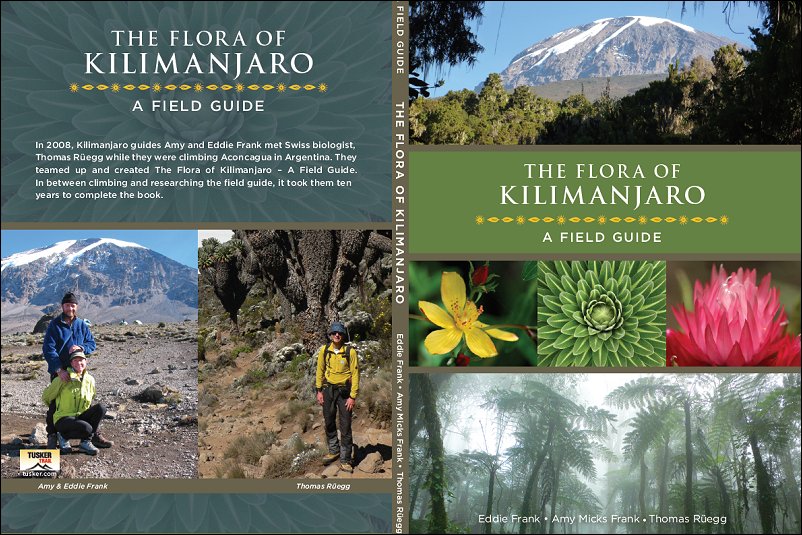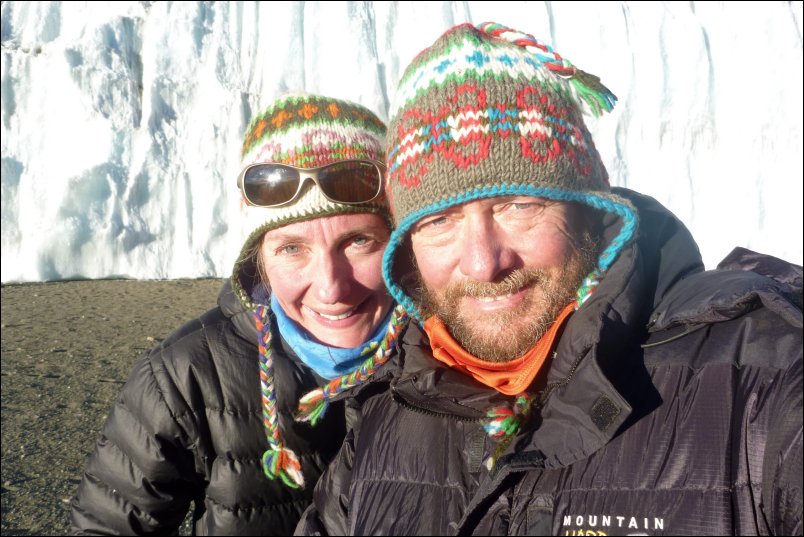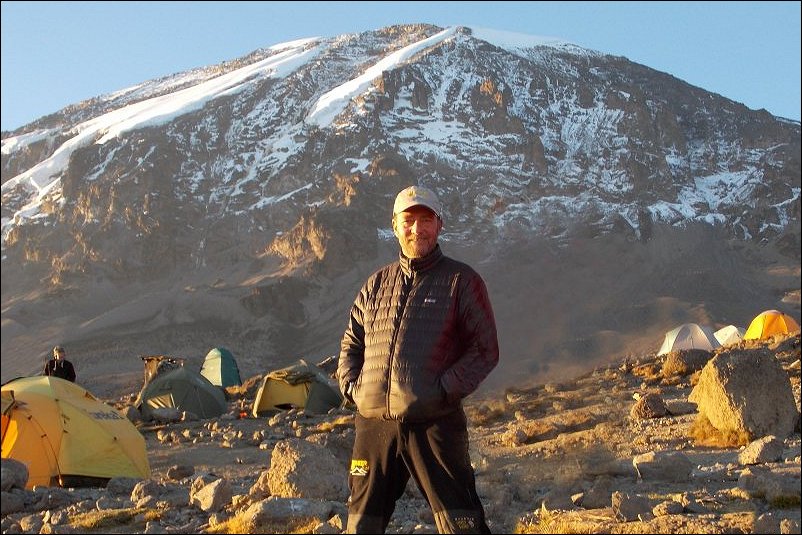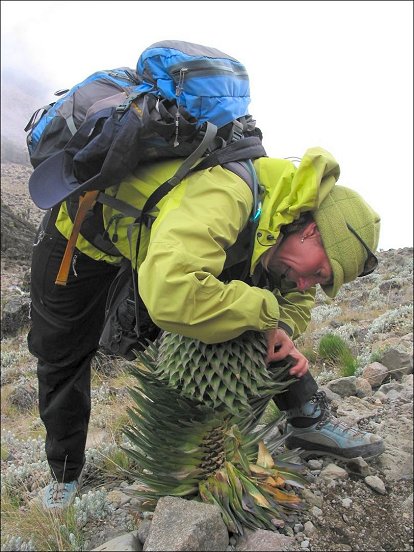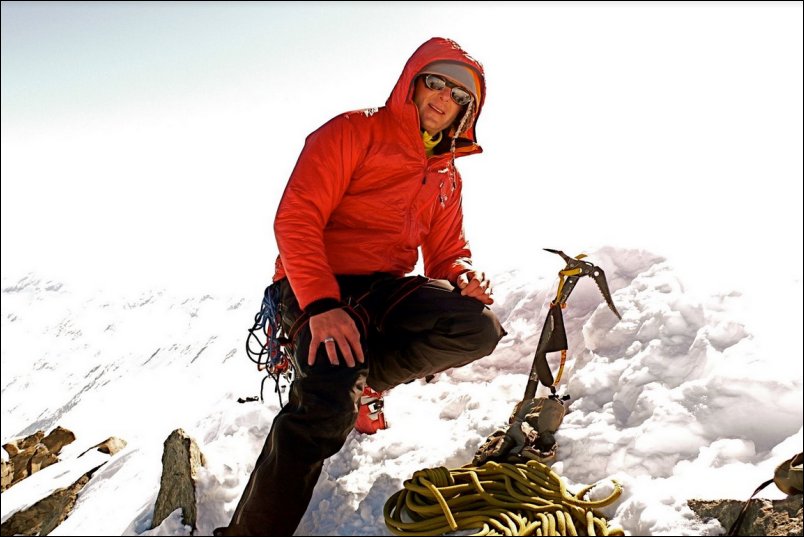Eddie Frank made his first climb up Kilimanjaro in 1977. Since then his Tusker Trail & Safari Company has established itself as one of the top climbing companies on Kilimanjaro and has led thousands of climbers to the summit. All those boot steps led to some amazing photos. Not all the photos were of climbers embracing at the summit after their life achievement moment. Subtler were images of the mountain’s amazingly diverse flora.
Eddie and Amy Frank, Tusker’s owner/guides and biologist Thomas Rüegg, a Swiss botanist and mountaineer have created the first comprehensive Guide to the Flora of Kilimanjaro.
The book will be released in the beginning of 2019 and it pays homage to the mountain’s iconic flowers, plants and trees. The Flora of Kilimanjaro-A Field Guide is the most extensive guidebook dedicated to Kilimanjaro’s dazzling flora and took over a decade to produce.
Five zones for your senses
So, why a book on Kilimanjaro’s underappreciated flora? Plants and trees help climbers gain insight into the mountain’s evolution and its continuing adaptation to today’s environmental conditions. It also adds a whole new dimension to your climb.
Arriving in Tanzania and seeing Kilimanjaro for the first time can be overwhelming but by taking a closer look at life in each of the mountain’s five distinct eco-zones can lead to a greater understanding of the mountain’s diverse totality.
These five zones include a luxuriant montane forest at the base of the mountain where insects home in on sweet flowering vines and nectar tubes. Many of Kilimanjaro’s most colorful flowers are here. Kilimanjaro is capped by an arctic like summit zone above 19,000 feet where there is snow and glaciers, yet plant life clings to the rocks and crevices despite low oxygen and wind-whipped conditions.
Throughout the various zones are different plant/tree species that survive in Kilimanjaro’s volcanic soils. The plants tell the story of the mountain’s evolution over millennia.
The Genesis
“It was Amy’s idea. After a we climbed together a few times she suggested we produce a guidebook on the plants. She is fascinated by them, but I knew we needed a botanist to help us,” Eddie recounts. “At first, we partnered with a botanist from the United Kingdom, but that didn’t work out.”
The project started with Eddie and Amy taking photos of the trees and plants most visible along the trails of Kilimanjaro. Cataloging all the photos was laborious, but the learning curve for the Franks was worth it.
“Our original partner was engaging at first, but then I couldn’t get him to return calls and after awhile I realized he wasn’t interested. I still don’t know why.” Eddie said, now knowing that dealing with the world of academia can be uncertain and prolong any collaborative project such as a book. As Eddie and Amy looked for a new botanist, the project hibernated and doubts about its full blossom crept in. Eddie and Amy don’t know the word “quit” and kept the project alive. They knew they had planted the seeds and waited until they could bloom.
Adventurer & Safari guide
Eddie grew up in South Africa and in his 20’s an unquenchable sense of adventure propelled him into the African bush where he led overland adventure expeditions in surplus army trucks. These trips morphed into Tusker and he became a self-taught safari guide learning as much about flora and fauna as he could. ” I spent time as a kid in the bush, but as a guide developed an obsession about natural history and the bush.”
After climbing Kilimanjaro 52 times, Eddie’s knowledge as well as his curiosity about the mountain’s ecology grew. He and Amy wanted a project that could encapsulate their years on the mountain, but also fill a knowledge gap that no one else was providing. There are dozens of trekking guides to Kilimanjaro; they are long on trail description but pay short shrift to the flora.
Eddie and Amy knew putting together a guidebook to the flora was not easy and searched for a botanist to complete the team and pull off the guide.
Amy’s approach
“We could have pushed it forward and gotten it done, but we always realized that to get it right takes time,” Amy said. She grew up in Canada spending hours outdoors and her curiosity about plant life partially led her to pursue a teaching career. “My background was in outdoor education in Canada and when I became a guide on Kilimanjaro, I wanted to share the beauty and knowledge that was there. The Field Guide is now a part of that tool kit.”
Amy’s concept for a field guide was a lot different from the hordes of guide books currently on the market covering everything from butterflies to bats on nearly every continent. Most guidebooks are not easy to use in the field as they are too bulky and not easily accessible while on an arduous hike. Her concept was a guide book that would fit in a trekking pant pocket or that would fit in your pack’s side pocket. She also wanted a book where you could take notes about the plants found along the trail.
Amy saw Tusker’s clients making their first foray into an African tropical setting were overwhelmed by all the new flowers and trees beneath and above them. Their curiosity was stirred, and a guidebook could be of immediate help in quenching their thirst for understanding, she reasoned. “Many of our clients are interested in lifelong learning and always want to identify what they see and photograph. They want to come home and reflect on their experience and round off their knowledge. People always want to quantify that experience.”
Working in Tusker’s mountain guide education program, Amy also realized that a plant guidebook could solidify the company’s guides’ knowledge base. The guides knew the relationships the plants had with their families and ancestors but didn’t know the technical names, although the guides have their own creative names for some of the plants.
Mountain gods to the rescue
Amy and Eddie’s academic collaborator emerged unexpectedly when the mountain gods introduced them to Thomas Rüegg, a Swiss mountain climber with PhD academic credentials. They met Rüegg on a climb of Argentina’s Aconcagua, the highest mountain in the Western Hemisphere (22,840 feet). They saw his rare combination of intellectual curiosity and high-altitude physicality that can achieve big things in the outdoors and in academia. He could also be the botanist the guidebook project needed to give it the scientific foundation.
His connection to Amy and Eddie was not unsurprising. When people share a love of mountains and a love of learning their personalities often mesh. On the Aconcagua climb Eddie discussed the field guide with Rüegg. He liked the concept but had never climbed in Africa. His intellectual curiosity was piqued, and he decided to join the effort. No one knew it would take the next ten years to complete.
A dream rekindled and realized
The book is for those preparing to climb Kilimanjaro, those who have climbed and want to learn more as well as the guide community working on Kilimanjaro.
“This was a labor of love between three people. The great part of this is we had our hopes dashed, then rekindled and now the dream has come true,” Eddie says with pride and sense of accomplishment.


